Your Cart is Empty

Ocean Plastic Cleanup: A Positive Article About Plastic!
A sea turtle entangled in a ghost net | © Francis Perez / The Ocean Cleanup
Ocean Plastic Cleanup : A Positive Article About Plastics
For all the negativity you hear about plastic entering our oceans, there is reason for hope! Times are changing, people are waking up. We may even be the last generation to see plastic in our oceans thanks to an ocean plastic cleanup project. This is a positive article, we promise…
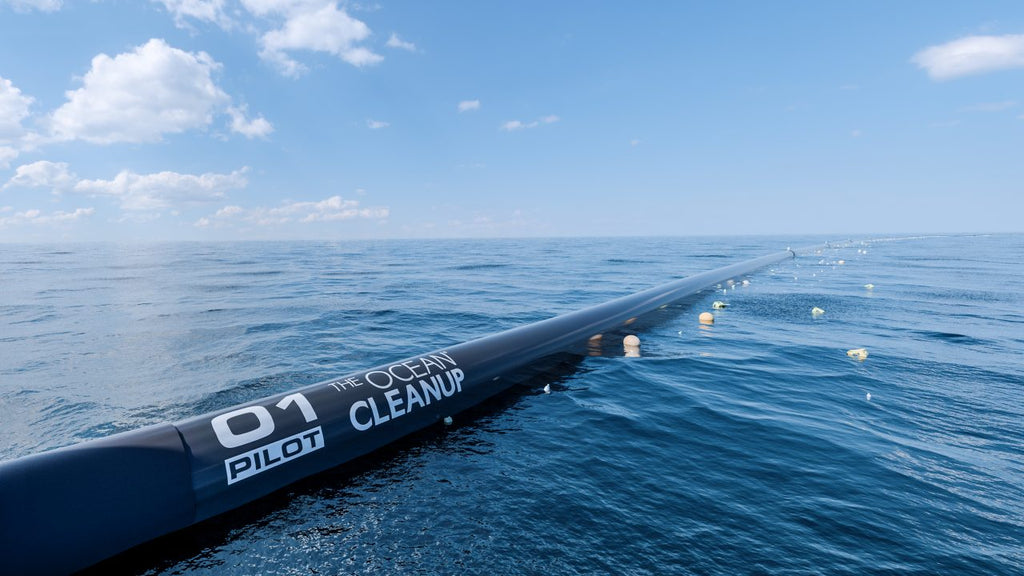
The current situation: Why we need an ocean cleanup
Ever wondered what happens to plastic waste after it is thrown away. Even if you are recycling, many developed countries have been sending plastic to poorer nations where unfortunately the end destination is less transparent.
Plastic is now everywhere. One of its miraculous properties that has helped make it so abundant is that it is incredibly durable, but this also means it will remain where it is deposited for hundreds of years.
In fact, 79% of all plastic ever disposed of is in the environment or seas.
Anyone who has watched David Attenborough will understand the scale of this disaster.
Tidal currents have collected giant patches of plastic in 5 main areas across our oceans. The largest of these is 3 times the size of France, located between California and Huawaii. It is known as the Great Pacific Garbage Patch.
One study estimated that it would take 67 ships 1 year to clean up less than 1% of the Great Pacific Garbage Patch. That doesn’t even consider the majority of plastic which has sunk to the ocean floors.
However, we are determined to make this a positive article about ocean plastic cleanup and human ingenuity, so we will quickly turn our attention to the progress being made.
It may shock you to hear that there are now plans to clean our oceans in record time. We are not talking about the distant future, this process has already begun!
I know, it seems rare nowadays that you hear good news when it comes to the environment.
Interested, we were...
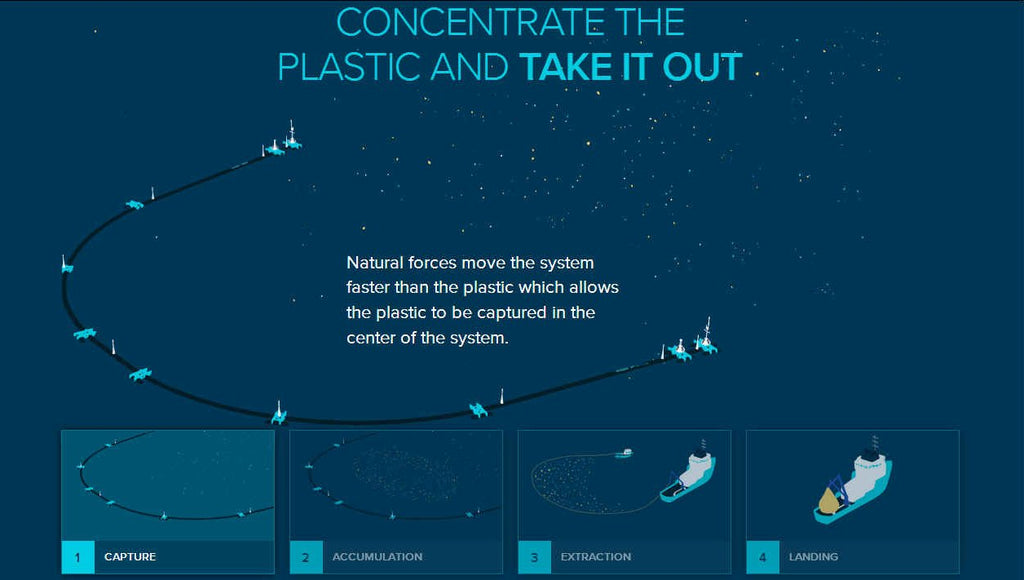
The Ocean Cleanup project
Have you have ever wondered whether you are doing enough for the environment and thought you were too young to make any real impact? Boyan Slat will make you think again.
Boyan was appalled at the state of our oceans after a scuba diving trip to Greece when he was just 16! He recalls having seen more plastic than fish and was determined to do something about it.
What started as a science project at school eventually led to him dropping out of uni to focus full time on his project. Whilst most kids his age were struggling to keep their rooms tidy, Boyan was targeting an ocean plastic cleanup project on a scale never before believed possible.
Many scientists originally dismissed his ideas as ludicrous, but with the help of social virality and the power of crowdfunding, his school project grew into a multi-million dollar non-profit organisation whose mission it is to rid the seas of all plastic.
He gives his talk on the Ted Stage.
This was back in 2012, the first system to collect plastic in the Great Pacific Garbage Patch is now live!
What Ocean Cleanup is promising is nothing short of miraculous, to remove 50% of plastic from our oceans in just 5 years, and to rid the oceans of all plastic by 2050!

How the Ocean Plastic Cleanup project works
Now for the remarkable ideas of a student...
The clean-up will consist of 60 U shape floating screens which funnels plastic towards the centre of the structure. Each of these floating barriers will be 600 meter in length and harness the natural power of the currents to drive plastics to a focus point where they can be collected and shipped off to be recycled.
As the barrier is not fixed in position, it also gets pushed around by the power of the ocean currents. This means that it mimics the journey of plastic, following the currents to areas where plastic is most concentrated.
However, it moves more slowly than the surrounding plastic due to an ocean anchor suspended 600 meters below. The result is that the faster moving plastic on the surface of the water gets trapped by the slower moving barrier.
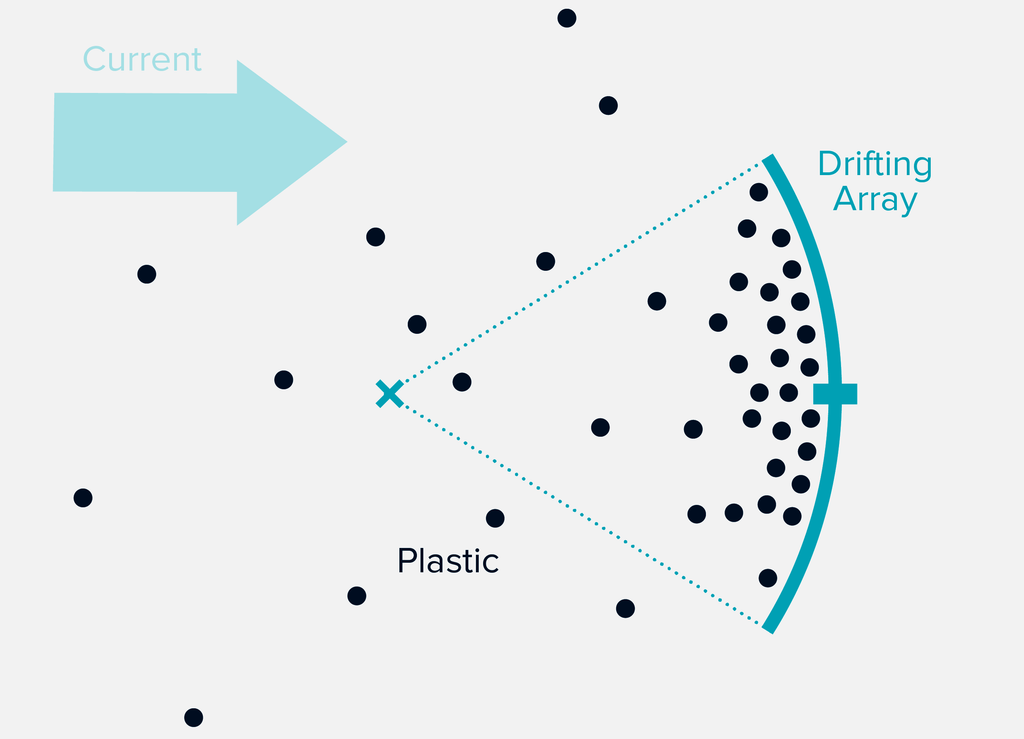
A mobile barrier has a number of benefits on top of being able to follow the ocean currents to patches of concentrated plastic.
Mobility keeps it more flexible and helps it to withstand the forces of nature. It also means that the plastic does not flow underneath the barrier, which would otherwise happen due to the tidal force if it was fixed.
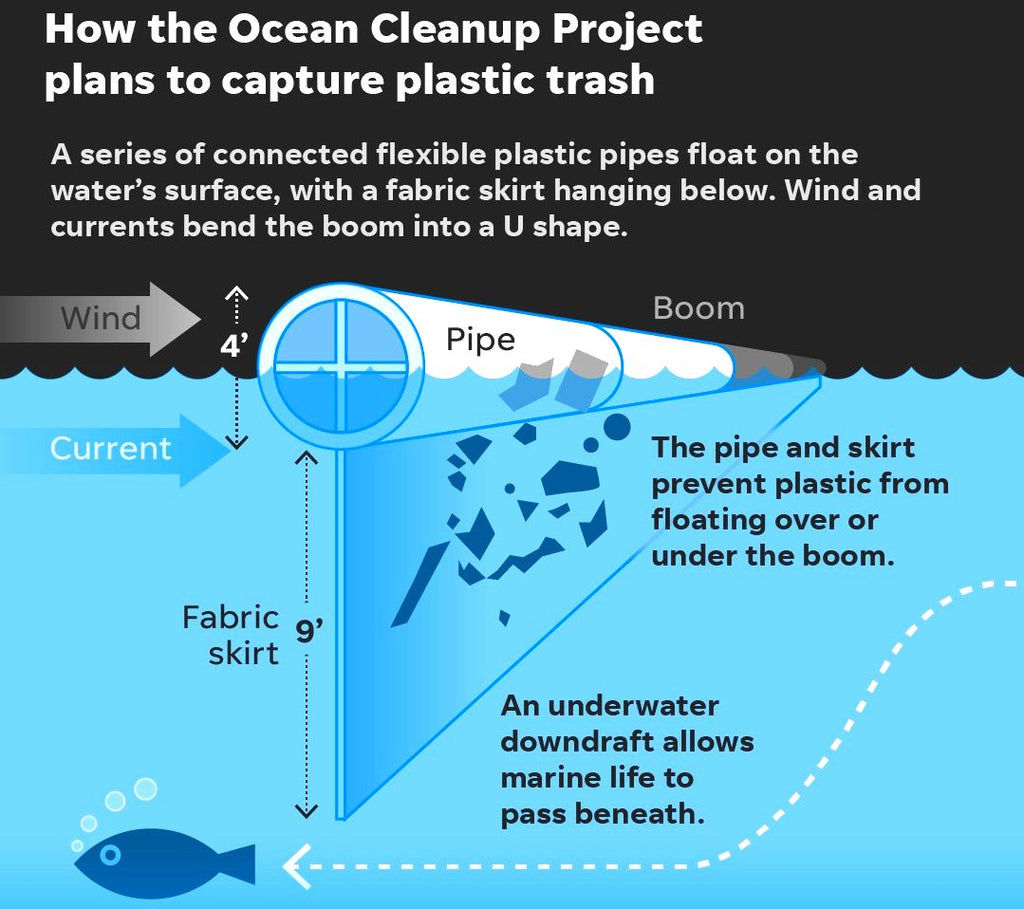
Once shipped back to shore, the plastic can be recycled and sold to customers who will make useful products from it, helping to fund the cleaning process.
Ocean plastic may even end up being turned into clothes!
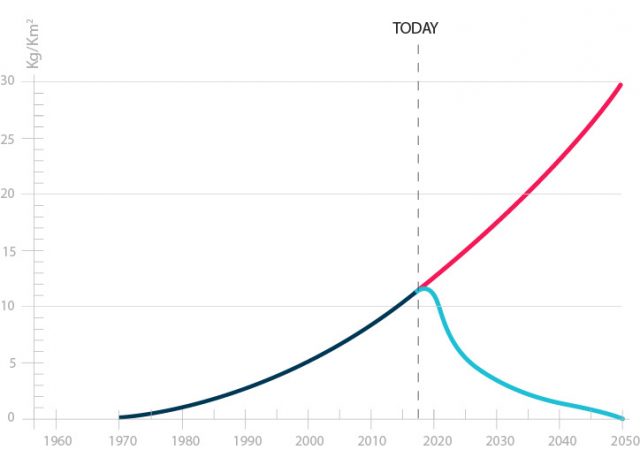
So how bad is it and why we must act now?
Our oceans are filling with plastic at an alarming rate. Just search ‘ocean plastic’ online and you will see terrifying articles stating things like ‘can our oceans survive’. With 5 trillion pieces of plastic currently in our oceans, it is all too easy to be overwhelmed by the doom and gloom.
It is estimated that 1.15 to 2.41 million tonnes of plastic are entering the ocean each year. Over half of this collects at the surface, floating around the globe for years as it is moved by ocean currents.
By using conventional methods, it would take around 80,000 years to remove all plastic from our oceans, not to mention the amount of CO2 that would be produced by ships in the process.
The Great Pacific Garbage Patch is roughly 1.6 million square kilometres, around 3 times the size of France. Scientists estimate that the central area alone consists of over 1.8 trillion pieces of plastic, weighing around 80,000 tonnes or the equivalent of over 500 jumbo jets. If this patch was divided up between every single person on the planet, each person would receive 250 pieces of plastic!
31 shocking facts about plastic you wish you could unread can be found here.

Why this matters
Nobody likes litter, least of all marine animals.
92% of plastics in the Great Pacific Garbage Patch (GPGP) consists of materials larger than 0.5cm. These larger pieces deteriorate overtime as they are exposed to the elements. They end up breaking down into small micro plastics, which are then mistaken for food by marine animals and make their way into the food chain.

At the surface of the GPGP plastic is 180 more common than marine life. One study shows that when measuring the dry weight of all food consumed by sea turtles, 74% of it was composed of ocean plastics. When this plastic is consumed, it will more than likely release toxic chemicals.
According to one source, sea plastic kills more than 100,000 whales, dolphins and seals each year.
This doesn’t just affect the animals themselves, it also impacts the economies of those who are dependent on the sea for their livelihoods. The UN estimates that around $13 billion is wasted every year on environmental damage caused by plastics in marine ecosystems.
What can you do?
Cleaning the oceans through this process is incredible, however we must also attempt to stop the problem at its source.
To start with, we should aim to reduce our plastic consumption and instead take advantage of reusable products and containers. The ultimate goal should be to prevent virgin material from being used in the first place.
To help you do your part, check out our article about plastic free online stores.
If you are interested in helping out the Ocean Clean Up in person you can follow this link, or if you are looking to donate, click here.Leave a comment
Comments will be approved before showing up.